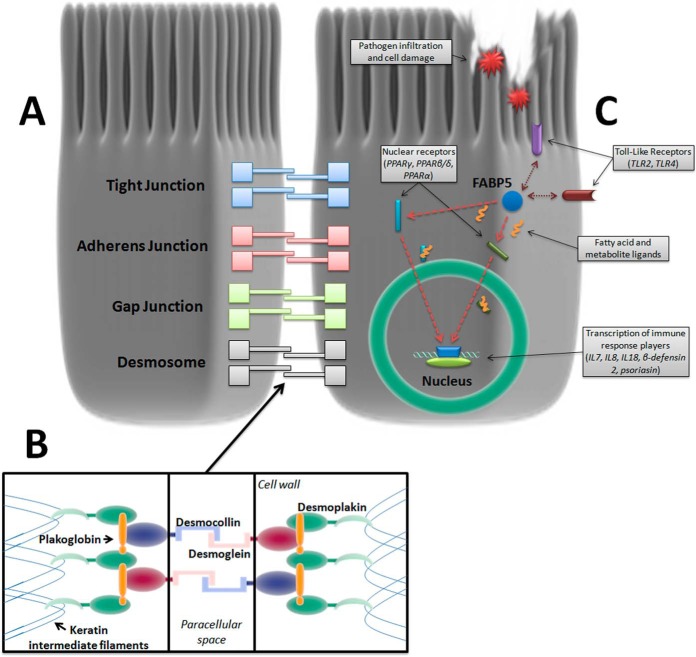Fig. 7.
Cell-adhesion complexes and biomarker candidates in the intestinal epithelium. A, A range of junctional complexes bind intestinal epithelial cells together to form the epithelial sheet. Desmosomes are the strong mechanical linkage complexes that hold the basal ends of cells together with extracellular and cytoplasmic components: B, Desmoglein and Desmocollin fasten adjacent cells together in the paracellular space whereas Desmoplakin anchors the intercellular binding structure to each cell's intermediate filament lattice structure. C, Fatty Acid-Binding Protein 5 (FABP5) is a cytoplasmic protein that has significant crosstalk with Toll-Like Receptor (TLR) pathogen recognition activation and chaperones a wide array of ligands to specific nuclear receptors during cell trauma, regulating cytokine and antibacterial peptide production. Listed in the graphic are some of the interacting and target receptors of FABP5 and subsequently produced immune response factors. Double arrows indicate TLRs mutually activated with FABP5 and single arrows indicate target nuclear receptors that FABP5 trafficks their payload to for transcription of immune response protein/peptides in the cell nucleus.

